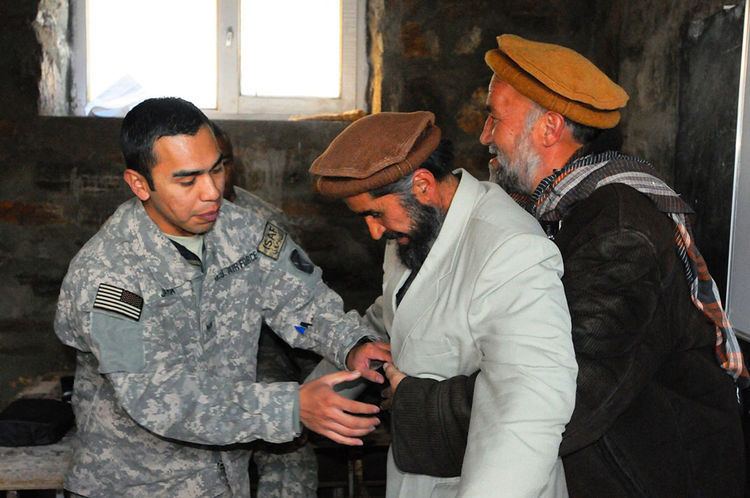Specialty Emergency medicine MeSH D000402 | ICD-9-CM 784.9, 933.1 | |
 | ||
ICD-10 F41.0, R06.8, T17, W78-W80 | ||
Choking is the mechanical obstruction of the flow of air from the environment into the lungs. Choking prevents breathing, and can be partial or complete, with partial choking allowing some, although inadequate, flow of air into the lungs. Prolonged or complete choking results in asphyxia which leads to anoxia and is potentially fatal. Oxygen stored in the blood and lungs can keep a person alive for several minutes after breathing stops.
Contents
Choking can be caused by:
Obstruction of the airway can occur at the level of the pharynx or the trachea. Foods that can adapt their shape to that of the pharynx (such as bananas, marshmallows, or gelatinous candies) can be a danger not just for children but for persons of any age.
Choking due to a foreign object resulted in 162,000 deaths in 2013 up from 140,000 deaths in 1990.
Symptoms and signs
Cause
The type of choking most commonly recognized as such by the public is the lodging of foreign objects (also known as foreign bodies, but consisting of any object which comes from outside the body itself, including food, toys or household objects) in the airway.
This type of choking is often suffered by small children, who are unable to appreciate the hazard inherent in putting small objects in their mouth. In adults, it mostly occurs while the patient is eating. In one study, peanuts were the most common obstruction.
Treatment
Choking can be treated with a number of different procedures, with both basic techniques available for first aiders and more advanced techniques available for health professionals.
Basic treatment includes a number of procedures aiming at removing foreign bodies from the airways. Most modern protocols, including those of the American Heart Association and the American Red Cross, recommend several stages, designed to apply increasingly more pressure. Most protocols recommend encouraging the victim to cough, followed by hard back slaps and if none of these things work; abdominal thrusts (Heimlich maneuver) or chest thrusts. If back slaps are performed, they must be performed with the head lower than the chest (i.e., bend the person over when you slap them hard between the shoulder blades with the heel of the palm); otherwise, the blow may drive the object deeper into the person's throat.
The American Medical Association advocates sweeping the fingers across the back of the throat to attempt to dislodge airway obstructions, once the choking victim becomes unconscious. However, many modern protocols recommend against the use of the finger sweep since, if the patient is conscious, they will be able to remove the foreign object themselves, or if they are unconscious, the rescuer should simply place them in the recovery position as this allows (to a certain extent) the drainage of fluids out of the mouth instead of down the trachea due to gravity. There is also a risk of causing further damage (for instance inducing vomiting) by using a finger sweep technique.
Peanut butter, which is very difficult to dislodge from the throat, may possibly be dissolved by pouring hot water down the throat—the method carries risk, but it may work on peanut butter as a last possible resort if nothing else first tried does.
The advanced medical procedure to remove such foreign objects is inspection of the airway with a laryngoscope or bronchoscope, and removal of the object under direct vision. Severe cases where there is an inability to remove the object may require cricothyrotomy (emergency tracheostomy). Cricothyrotomy involves making an incision in a patient's neck and inserting a tube into the trachea in order to bypass the upper airways. The procedure is usually only performed when other methods have failed. In many cases, an emergency tracheostomy can save a patient's life, but if performed incorrectly, it may end the patient’s life.
Multiple evidence suggest, that one of promising approaches for self treatment during choking could be by applying the head-down (inversed) position The Heimlich Maneuver (abdominal thrusts) can be performed on oneself with one's own hands the same way one would perform it on another person; this can also be affected by positioning one's own abdomen over a chair, railing, or countertop and driving the abdomen upon the object with sharp, upward thrusts as a substitute for thrusts made with the hands.
